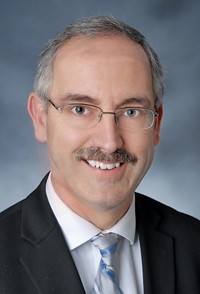Advertisement
Grab your lab coat. Let's get started
Welcome!
Welcome!
Create an account below to get 6 C&EN articles per month, receive newsletters and more - all free.
It seems this is your first time logging in online. Please enter the following information to continue.
As an ACS member you automatically get access to this site. All we need is few more details to create your reading experience.
Not you? Sign in with a different account.
Not you? Sign in with a different account.
ERROR 1
ERROR 1
ERROR 2
ERROR 2
ERROR 2
ERROR 2
ERROR 2
Password and Confirm password must match.
If you have an ACS member number, please enter it here so we can link this account to your membership. (optional)
ERROR 2
ACS values your privacy. By submitting your information, you are gaining access to C&EN and subscribing to our weekly newsletter. We use the information you provide to make your reading experience better, and we will never sell your data to third party members.
Biological Chemistry
Chemistry Probing Life
by Rudy M. Baum
September 27, 2004
| A version of this story appeared in
Volume 82, Issue 39
What are the challenges for chemistry in probing the molecular basis of life processes? That question was addressed at a day-and-a-half workshop held recently at the American Chemical Society headquarters in Washington, D.C. The workshop was sponsored by ACS and the National Science Foundation and hosted by ACS President Charles P. Casey and NSF Chemistry Division Director Arthur B. Ellis.
During the first morning and early afternoon of the workshop, speakers outlined their views of how chemistry is approaching biological systems and the opportunities for breakthroughs in understanding life processes. In the late afternoon and into the second day of the workshop, attendees worked to define a manageable set of grand challenges and to begin crafting a workshop report.
My career as a chemist and as an observer of the chemical sciences extends back far enough that I remember well when most enzymes were essentially catalytic black boxes characterized by Michaelis/Menten constants. The ability of X-ray crystallographers to solve the structures of ever larger proteins opened a window on biology that was breathtaking. Yet, at the workshop, such structures were described by more than one participant as mere "snapshots"--highly useful, of course, but inadequate to the task of understanding the dynamic behavior of proteins interacting with small molecules and with other proteins. What is now needed, they maintained, are rigorously accurate "molecular movies" of such interactions.
Rustem F. Ismagilov, an assistant chemistry professor at the University of Chicago, observed that living systems possess many qualities that make them very different from the systems chemists are used to characterizing. Living systems have an enormous number of components involved in highly complex reaction networks; they are far from equilibrium and inherently dissipative; they are nonuniform in space and time. New tools that address these qualities are needed to probe living systems, Ismagilov maintained.
The working draft of the workshop report identified 10 challenges where chemistry can make progress toward understanding the molecular basis of life processes:
◾ What can we make by harnessing the synthetic capacity of life?
◾ What are the molecular mechanisms responsible for an organism's development?
◾ What is the molecular basis of memory and learning?
◾ How do life processes emerge from networks of interacting chemical reactions?
◾ Can chemistry be the steward of the biosphere?
◾ How can we build optimally healthy organisms?
◾ Can we image the components of cells and make movies of molecules moving through the cellular assembly?
◾ Can we find ways to bridge living and nonliving systems?
◾ How can we view, interpret, and direct molecular choreography in living systems?
◾ How do living systems coordinate molecular processes?
What struck me about the workshop was the audacity of the challenges being discussed and the confidence of the chemists that progress could be made addressing them. On only one challenge--the possibility of a molecular-level explanation of consciousness--did the attendees step back and concede that the scope of the question was beyond chemistry's capabilities.
Undoubtedly, this list will evolve as the workshop report is honed, but it provides a good sense of the tenor of the discussion and the opportunities these chemists see for their discipline in the coming years. The challenges are interesting both for their difficulty and for their diversity.
Some of the challenges are practical, such as harnessing the synthetic capacity of life to provide new opportunities in pharmaceuticals, advanced materials, and environmental protection and remediation. Another addresses a most fundamental question of science: How does life emerge from a network of chemical reactions? And one has a deeply moral component, recognizing as it does that human impact on the biosphere is influencing global habitability.
Chemistry prides itself on being the "central science." It is also a powerful set of tools for understanding the natural world. These challenges remind us again of chemistry's essential role in understanding life at its most fundamental level.
Thanks for reading.





Join the conversation
Contact the reporter
Submit a Letter to the Editor for publication
Engage with us on Twitter